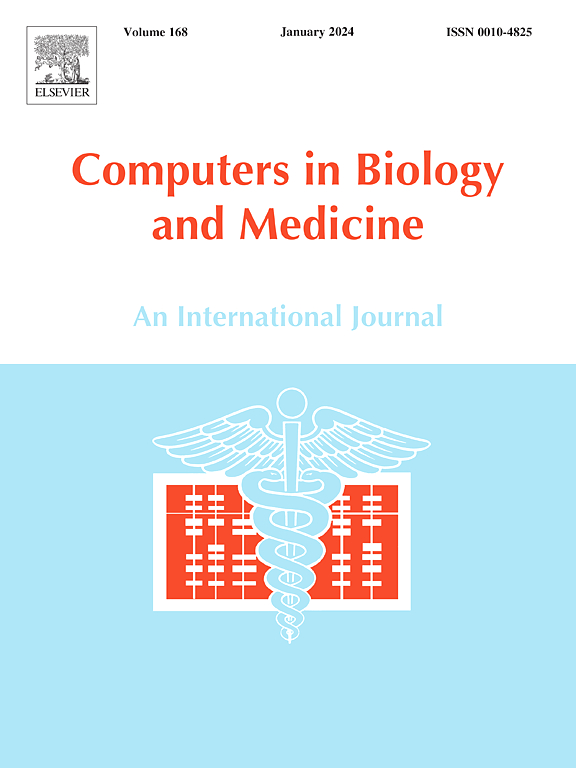A hybrid approach for EEG motor imagery classification using adaptive margin disparity and knowledge transfer in convolutional neural networks
IF 7
2区 医学
Q1 BIOLOGY
引用次数: 0
Abstract
– Motor Imagery (MI) using Electroencephalography (EEG) is essential in Brain-Computer Interface (BCI) technology, enabling interaction with external devices by interpreting brain signals. Recent advancements in Convolutional Neural Networks (CNNs) have significantly improved EEG classification tasks; however, traditional CNN-based methods rely on fixed convolution modes and kernel sizes, limiting their ability to capture diverse temporal and spatial features from one-dimensional EEG-MI signals. This paper introduces the Adaptive Margin Disparity with Knowledge Transfer 2D Model (AMD-KT2D), a novel framework designed to enhance EEG-MI classification. The process begins by transforming EEG-MI signals into 2D time-frequency representations using the Optimized Short-Time Fourier Transform (OptSTFT), which optimizes windowing functions and time-frequency resolution to preserve dynamic temporal and spatial features. The AMD-KT2D framework integrates a guide-learner architecture where Improved ResNet50 (IResNet50), pre-trained on a large-scale dataset, extracts high-level spatial-temporal features, while a Customized 2D Convolutional Neural Network (C2DCNN) captures multi-scale features. To ensure feature alignment and knowledge transfer, the Adaptive Margin Disparity Discrepancy (AMDD) loss function minimizes domain disparity, facilitating multi-scale feature learning in C2DCNN. The optimized learner model then classifies EEG-MI images into left and right-hand movement motor imagery classes. Experimental results on the real-world EEG-MI dataset collected using the Emotiv Epoc Flex system demonstrated that AMD-KT2D achieved a classification accuracy of 96.75 % for subject-dependent and 92.17 % for subject-independent, showcasing its effectiveness in leveraging domain adaptation, knowledge transfer, and multi-scale feature learning for advanced EEG-based BCI applications.
基于自适应边缘差和卷积神经网络知识转移的脑电运动图像分类混合方法
-使用脑电图(EEG)的运动图像(MI)在脑机接口(BCI)技术中是必不可少的,通过解释大脑信号实现与外部设备的交互。卷积神经网络(cnn)的最新进展显著改善了EEG分类任务;然而,传统的基于cnn的方法依赖于固定的卷积模式和核大小,限制了它们从一维EEG-MI信号中捕获不同时空特征的能力。本文介绍了一种基于知识转移的自适应边际差异2D模型(AMD-KT2D),该模型是一种增强脑电mi分类的新框架。该过程首先使用优化的短时傅立叶变换(OptSTFT)将EEG-MI信号转换为二维时频表示,该方法优化了窗口函数和时频分辨率,以保持动态的时间和空间特征。AMD-KT2D框架集成了一个引导学习器架构,其中改进的ResNet50 (IResNet50)在大规模数据集上进行预训练,提取高级时空特征,而定制的2D卷积神经网络(C2DCNN)捕获多尺度特征。为了保证特征对齐和知识转移,自适应边际差异损失函数(AMDD)使域差异最小化,促进了C2DCNN的多尺度特征学习。然后,优化的学习者模型将EEG-MI图像分为左运动和右运动图像类。使用Emotiv Epoc Flex系统收集的真实EEG-MI数据集的实验结果表明,AMD-KT2D在受试者依赖和受试者独立方面的分类准确率分别达到96.75%和92.17%,显示了其在利用领域适应、知识转移和多尺度特征学习为高级基于eeg的脑机接口应用程序的有效性。
本文章由计算机程序翻译,如有差异,请以英文原文为准。
求助全文
约1分钟内获得全文
求助全文
来源期刊

Computers in biology and medicine
工程技术-工程:生物医学
CiteScore
11.70
自引率
10.40%
发文量
1086
审稿时长
74 days
期刊介绍:
Computers in Biology and Medicine is an international forum for sharing groundbreaking advancements in the use of computers in bioscience and medicine. This journal serves as a medium for communicating essential research, instruction, ideas, and information regarding the rapidly evolving field of computer applications in these domains. By encouraging the exchange of knowledge, we aim to facilitate progress and innovation in the utilization of computers in biology and medicine.
 求助内容:
求助内容: 应助结果提醒方式:
应助结果提醒方式:


